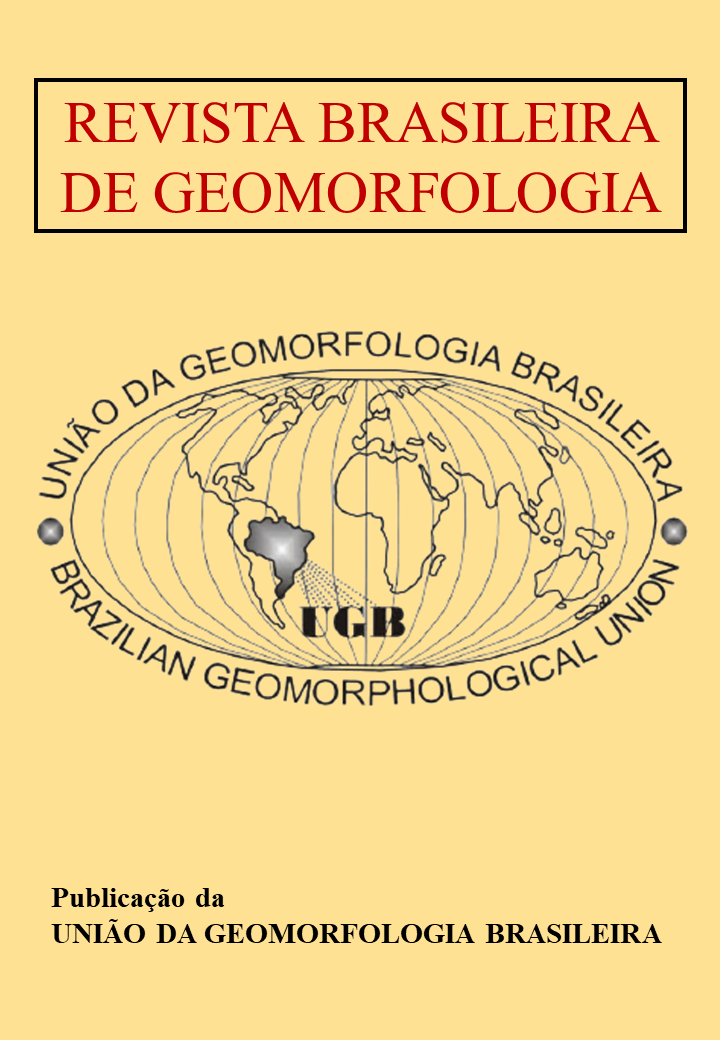Inselbergs shaped by collapse: considerations on the structural control on granitic scarps
DOI:
https://doi.org/10.20502/rbgeomorfologia.v25i2.2412Keywords:
Fractures, Scarp, Blocks, CollapseAbstract
Type 2 inselbergs (Maia et al., 2015) correspond to the geomorphological manifestation of fracturing and collapse processes. The steep slopes partially covered by angular boulders scattered chaotically reveal, in evolutionary terms, the predominance of morphostructural controls, represented by igneous foliation, veins/dikes, and unloading joints. These controls create anisotropies guiding fracturing directions. In this work, we demonstrate aspects of the geomorphological evolution of granitic inselbergs subjected to a structural propensity to fracturing. For this purpose, the Pedra da Galinha Choca inselberg (PGC), in Quixadá, State of Ceará, was analyzed as an example of morphology resulting predominantly from the mechanical disintegration of the rock mass. Data extraction and interpretation were carried out based on fieldwork and UAV photogrammetry, whose products are high-resolution models, Orthomosaic, and DEMs. In steep slopes above 50°, solutional features are incipient due to the structural instability associated with the continuous rockfall, which does not provide enough time for gnammas and karren to form. The primary geomorphic forms of ornamentation in fractured inselbergs are cavities like collapse tafoni (TC) and large collapsed boulders (MBC). As a result of this structural setting, the inselberg displays sharp features, steep slopes, and wide talus slopes.
Downloads
Downloads
Published
How to Cite
Issue
Section
License

This work is licensed under a Creative Commons Attribution-NonCommercial 4.0 International License.
Author (s) retain copyright and grant the journal right of first publication with the work simultaneously licensed under the Creative Commons Attribution License that allows sharing the work with recognition of its initial publication in this journal.








